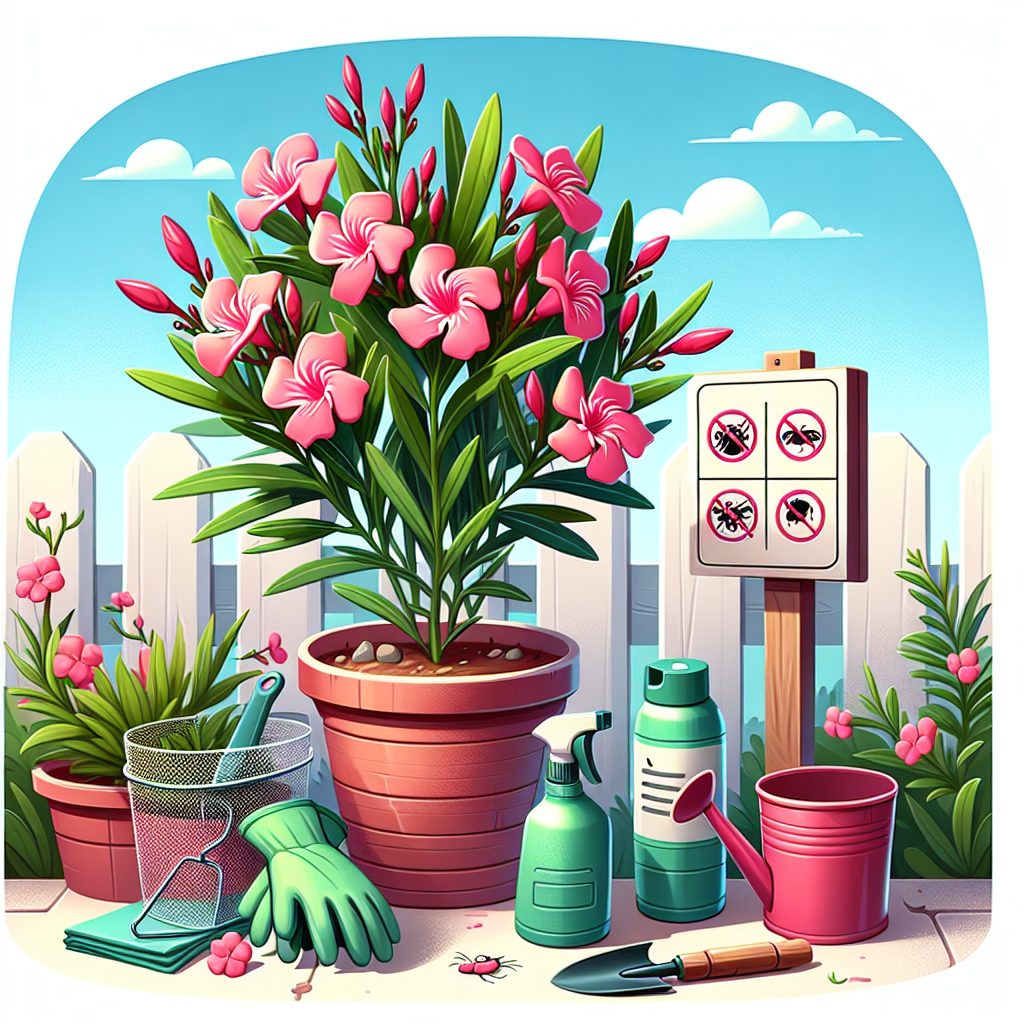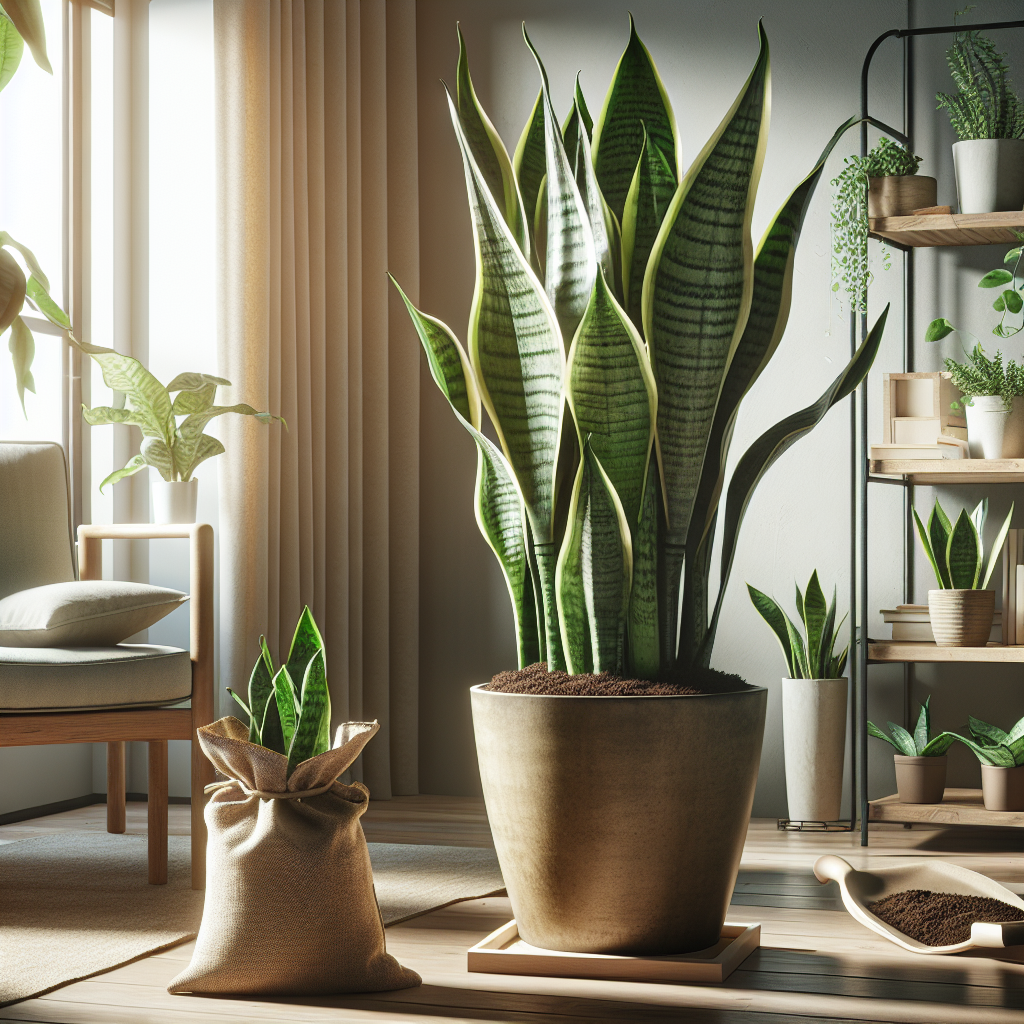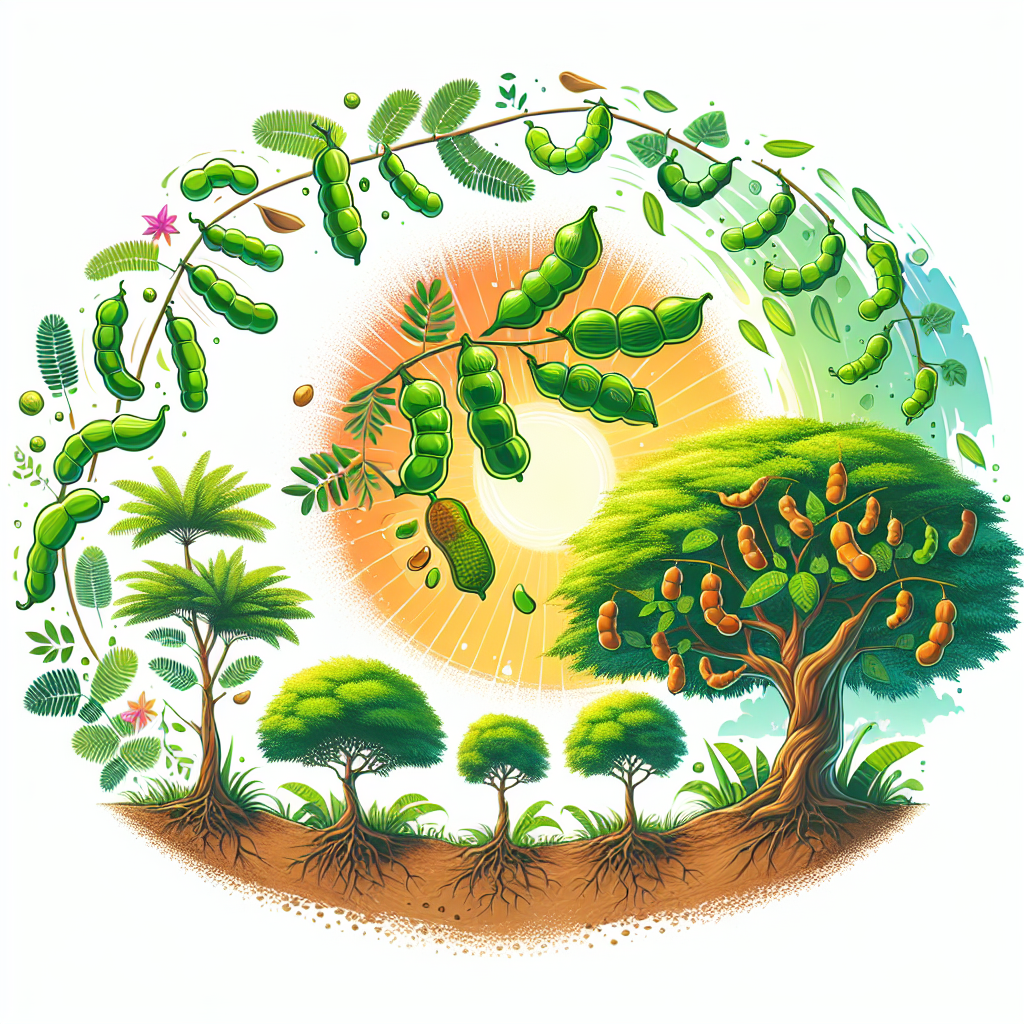How to Keep Oleander Safe from Oleander Caterpillars
Updated July 21, 2024 at 2:19 am
Protect your beautiful oleander plants from the destructive munching of oleander caterpillars with this comprehensive guide on prevention and safe, effective control methods.

Understanding the Oleander and Its Pest: The Oleander Caterpillar
Oleanders are beautiful and hardy shrubs that bloom with vibrant flowers, often enhancing the aesthetic of many gardens. However, the oleander caterpillar, a bright orange or red larva with black tufts of hair, can quickly turn your plant from a lively bush into a skeleton of its former glory. It’s essential to understand this pest to keep your oleander safe.
Identifying Oleander Caterpillars and Their Damage
Seeing the damage before you spot the caterpillar is common. Chewed leaves, or complete defoliation, are telltale signs. If you look closer, the culprits are unmistakable with their distinct coloration and group feeding patterns. They are the larvae of the polka-dot wasp moth, and can be found clumped together on the undersides of leaves.
Integrated Pest Management (IPM): A Sustainable Approach
Employing IPM strategies is an eco-friendly way to control oleander caterpillars. This may include cultural, biological, and chemical controls. Mechanical removal, such as hand-picking caterpillars from your plants, can be effective but is labor-intensive. Encouraging or introducing natural predators like birds or parasitic wasps can provide long-term relief.
Biological Control Agents
Natural Predators: Birds are natural predators of the oleander caterpillar. Providing a bird-friendly garden, with birdhouses and water baths, can encourage avian allies to help control the caterpillar population. Also, parasitic wasps target oleander caterpillars, laying eggs within the larvae, which eventually kill the host caterpillar. Planting flowers that attract these beneficial insects can help.
Bacillus thuringiensis (Bt): This soil-borne bacterium produces toxins harmful to caterpillars but safe for humans, pets, and beneficial insects. Applying a Bt-based product like ‘Thuricide’ or ‘Dipel’ directly to your oleander leaves can effectively control the caterpillar population as part of your IPM.
Chemical Control: When and How to Apply Insecticides
When biological controls are not enough, responsible use of insecticides can aid in managing oleander caterpillar outbreaks. Insect growth regulators (IGRs) and contact insecticides such as spinosad or pyrethroids may be necessary. Always follow the label instructions precisely, and consider the timing of your applications to minimize impact on beneficial insects.
Maintenance and Monitoring: Prevention Tactics
Regular monitoring is crucial in early detection. Inspecting your oleanders frequently allows for prompt action. Pruning infested areas and disposing of them properly helps prevent the spread of the caterpillars. Keeping your plants healthy with proper watering, fertilization, and soil conditions decreases the likelihood of severe infestations.
Selecting the Right Products for Oleander Caterpillar Control
Choosing products for pest control can be a daunting task due to the plethora of options available. Here are some reviews and recommendations for products you might consider:
- Bt-Based Insecticides: ‘Safer Brand Caterpillar Killer’ with Bt is a popular choice. Reviewers appreciate its effectiveness while still being safe for use around pets and wildlife. A single application can provide protection for up to a couple of weeks.
Find This and More on Amazon
- Spinosad Products: ‘Monterey Garden Insect Spray’ containing spinosad is another highly reviewed option. This organic insecticide is lauded for its rapid action against caterpillars without harming beneficial insects like bees when used as directed.
Find This and More on Amazon
Before considering chemical treatments, always make sure you have tried less impactful methods. This way, you’re adhering to IPM principles and doing your part to protect the environment.
Caterpillar-Resistant Oleander Varieties: Are They an Option?
Developing resistant plant varieties is an ongoing area of research. Some suggest that dwarf oleander varieties may be less appetizing to oleander caterpillars, though empirical evidence is scarce. Anything that can naturally deter pests is worth considering in conjunction with other strategies.
Oleander Caterpillar Life Cycle and Control Timing
Understanding the life cycle of the oleander caterpillar is pivotal for effective control. They undergo several generations a year, with warmer climates seeing continuous activity. Control methods should target the larval stage, which is responsible for the damage, and should be timed with their life cycle stages for maximum effectiveness.
Understanding and Managing Oleander Toxicity
Oleanders contain toxic cardiac glycosides which can be harmful if ingested by humans or animals. As you manage caterpillar infestations, it’s important to be mindful of oleander toxicity and ensure that all plant debris is disposed of safely and out of reach of pets and children.
Landscape Design and Caterpillar Management
Strategic layout of your garden can play a role in pest management. Interspersing oleander with other plants, particularly those that attract oleander caterpillar predators, can create a healthier ecosystem that naturally keeps pest populations in check. While you’re designing, you can also look into pollinator-friendly gardens for broader ecological benefits.
Exploring Organic Solutions for Oleander Care
For those wishing to maintain their garden organically, neem oil can be a viable option. Though not as immediately effective as some chemical options, neem oil can disrupt the life cycle of the caterpillars over time. Consistent application according to the product’s specifications is key to success.
The Role of Community in Pest Management
Community efforts in pest management can amplify the success of controlling oleander caterpillars. If these pests are a common problem in your area, coordinating with neighbors on treatment efforts can reduce their prevalence on a larger scale.
Professional Consultation: When to Seek Help
If you have tried multiple methods and still struggle with infestations, consulting with a local extension service or professional horticulturist can provide targeted advice. They might suggest specific practices suited to your local environment and oleander varieties.
Responsible Use of Pesticides and the Environment
When dealing with garden pests, it’s crucial to consider the environmental impact of pesticide use. Making informed decisions, using pesticides as a last resort, and always following label instructions reduce the risk of harm to other wildlife and the broader ecosystem.
Conclusion
Dealing with oleander caterpillars can be challenging, but with the right knowledge and tools, you can protect your oleanders and enjoy their beautiful blooms without heavy infestations. Remember to consider all aspects of pest control, from natural predators to chemical treatments, and always prioritize environmentally responsible practices. With diligent care and monitoring, your oleander plants can thrive and contribute to a healthy and vibrant garden ecosystem.
Physical Removal and Maintenance Strategies
Starting with the most direct approach, physical removal, can be surprisingly effective. Arm yourself with a pair of gloves and get to work plucking these critters off your oleander. They’re quite conspicuous due to their unique color, making them easier to spot and remove. This task might be time-consuming, but it’s a very hands-on way to protect your plants.
In addition to handpicking, regular maintenance such as trimming and disposing of affected foliage can prevent the spread. This proactive approach not only helps in controlling current infestations but also reduces future outbreaks by eliminating potential breeding grounds.
Creating a Healthy Garden Ecosystem
When you foster a healthy garden ecosystem, everything begins to balance out over time. Companion plants might distract or repel caterpillars. For example, planting marigolds around your oleanders could potentially deter pests with their strong scent.
Remember, diversity in your garden is not just aesthetically pleasing but functionally important for pest management. Introduce a variety of plants to attract different beneficial insects, creating a robust natural defense against pests like the oleander caterpillar.
Understanding the Warning Signs of Infestation
Being vigilant about your plants’ health allows for early intervention. Yellowing leaves, stunted growth, or an unusual number of birds lingering around your oleanders could signal a caterpillar problem.
Additionally, understanding the signs of a healthy oleander, such as its lush green leaves and vibrant flowers, provides a clear contrast to when something’s amiss. Keep an eye out for these indicators to catch an infestation in its early stages. To ensure your plant is at its best, consider perusing a step-by-step guide like mastering plant care, which can offer valuable insights into maintaining plant health.
Safe Disposal of Infested Plant Material
Upon removing the caterpillars or infested foliage, dispose of them safely. Do not compost infested leaves as the caterpillars might simply continue their life cycle in the compost pile. Burning or placing in sealed bags for garbage pickup are more reliable methods to ensure they don’t come back to haunt your garden.
The same goes for pruning dead or infested branches. It’s a good practice to immediately remove these from your property to limit any chances of pests spreading or finding their way back into your garden.
Enhancing Oleander Beauty Post-Caterpillar Management
Once you have addressed the oleander caterpillar issue, it’s time to revive your oleander’s beauty. Proper feeding with a balanced fertilizer can boost the plant’s recovery from any damage sustained during infestations.
Moreover, providing the right amount of water and ensuring adequate sunlight can rejuvenate your oleanders, prompting new growth and restoring their lush appearance. For tips on nurturing plants back to health, consider reading about caring for plants, which can be quite enlightening and can apply to outdoor species as well.
Future-Proofing Your Garden Against Pests
After successfully managing an outbreak, take measures to prevent a recurrence. Employing mulches can safeguard against a range of pests, not just oleander caterpillars, by creating a barrier they find difficult to traverse.
Finally, consider setting up a regular treatment plan with your chosen methods, whether biological, chemical, or manual. Regular checks and treatments in line with the pest’s life cycle can make all the difference between a year-round problem and occasional maintenance.
Documenting Your Oleander Care Journey
An often-overlooked strategy in garden management is keeping a log. Noting when you spotted pests, what treatment was applied, and how the oleanders responded over time can provide powerful insights for future pest management.
This gardening journal can also be a tool to share with fellow gardeners in your community. By comparing notes, you could discover patterns or solutions you hadn’t considered before. It’s a resource that becomes more valuable with each entry and shared experience.
Maximizing Oleander Health with Ideal Growing Conditions
Oleanders are relatively hardy, but they do have preferences when it comes to their growing conditions. Ensuring they receive the right amount of sunlight, water, and nutrients will make them less susceptible to pests like the oleander caterpillar.
Focusing on soil quality is also crucial. Oleanders thrive in well-draining soil, so if you’re dealing with clay-heavy or overly sandy ground, make adjustments. Amending the soil with compost or organic matter can improve its texture and fertility, providing a stronger foundation for your plants.
Community Outreach and Education
Infestations are not just an individual problem; they can affect entire neighborhoods. By sharing knowledge and collaborating on pest control efforts, communities can significantly reduce pest populations.
Educational workshops, community gardening groups, or even social media platforms can serve as tools to spread awareness and unite efforts. If oleander caterpillars are a common problem in your area, consider leading or participating in such initiatives. Collective action can bring about drastic changes in controlling these pests.
Selecting Oleander Varieties Less Prone to Caterpillar Infestations
Choosing the right variety of oleander can make a difference in pest management. Although no oleander is completely immune, some varieties do show signs of being less favored by the caterpillars. For instance, the ‘Petite Pink’, a dwarf variety, has been noted by some gardeners to experience fewer problems with these pests.
Researching the varieties available and opting for those with a track record of resistance can be a proactive step toward healthier plants. Consulting with local nurseries or garden centers can also provide beneficial information on the best varieties for your area.
Exploring Natural and Homemade Remedies for Caterpillar Control
There’s a wealth of information available for those who prefer a DIY approach to pest control. Garlic spray, for instance, can act as a deterrent due to its strong smell, and soapy water sprays can dehydrate and kill small infestations of caterpillars.
Remember, consistency and persistence are key when employing homemade solutions. It may take several applications to see results, so patience is vital. Always test these remedies on a small area first to ensure they won’t harm your oleanders.
Protecting Oleanders During the Vulnerable Seedling Stage
Young oleander plants are particularly susceptible to caterpillar damage. Protective coverings, like garden fleece or fine netting, can prevent moth access during the critical early growth period. Just make sure that the material is permeable enough to allow light and water through.
Also, keeping seedlings well-monitored and responding quickly to any signs of an infestation can save young plants from serious damage. Vigilance during this vulnerable stage pays off in the development of a healthy and resilient shrub.
Timing Your Control Methods with Caterpillar Development
Lifecycle synchronization can enhance the effectiveness of your control efforts. Oleander caterpillars go through multiple generations a year, especially in warmer climates. Timing your treatments to coincide with their developmental stages, particularly before they mature and lay eggs, can reduce future populations significantly.
Usually, this means watching out for moth activity and the first signs of caterpillars in early spring. As with any pest, the sooner you can intervene in their life cycle, the better the chances of preventing an infestation.
Long-Term Strategies for Garden Health and Pest Resistance
Maintaining a healthy garden over time is the best defense against not just oleander caterpillars but many other pests. This includes routine soil tests to adjust pH and nutrient levels, mulching to preserve soil moisture and temperature, and proper spacing to prevent overcrowding and stress on the plants.
Every element of garden care contributes to the overall health of your oleanders. Healthier plants are naturally more resistant to pests and can recover more quickly from infestations when they do occur.
Educating Yourself on Oleander Care
Investing time in learning about your specific type of oleander and its needs can go a long way. Whether it’s understanding the ideal pruning techniques, recognizing signs of disease, or learning more about its preferred habitat, knowledge is a powerful tool in garden maintenance.
There’s also much to gain from staying informed about pests like the oleander caterpillar. By understanding their behavior and preferences, you can better anticipate and mitigate their impact. Engaging with local gardening communities or online forums can also broaden your understanding and provide you with tried-and-tested advice.
Exploring Professional Pest Control Products
When looking for professional-grade solutions, products such as ‘Talstar P Professional Insecticide’ have received positive reviews for controlling a wide variety of pests. While more potent than some over-the-counter options, they should be used judiciously and with full regard for the environment and non-target species.
Professional products often have more strict application guidelines, and it’s critical to adhere to these for safety and efficacy reasons. With any potent chemical, there’s an inherent risk, so ensure you’re fully equipped and educated before using them.
Find This and More on Amazon
Maintaining the delicate balance between effective pest control and the health of your garden ecosystem is key. Products like ‘Talstar P’ can offer a solution in cases of severe infestations, but always strive to use the least impactful method first.
Utilizing Technological Advances in Garden Pest Management
Technology offers new and innovative ways to combat pests like the oleander caterpillar. Apps that can help identify pests, track life cycles, or even alert you to potential problems before they happen are becoming more commonplace and can be an asset to the modern gardener.
Some technology even allows for remote monitoring of your plants’ health, meaning you can keep an eye on your oleander’s well-being even when you’re not physically in the garden. Embracing these advancements can make pest management more proactive rather than reactive.
The Importance of Aesthetic and Healthy Oleanders
Oleanders not only contribute to the beauty of your garden but can also play a role in its ecological health. Their blossoms are attractive to beneficial pollinators, while their dense foliage offers shelter to birds and other wildlife. Healthy oleanders are more than just a visual treat; they’re a key component of a thriving garden.
By maintaining the vitality of your oleanders, you’re also supporting the broader biodiversity of your outdoor space. So when you protect your oleanders from pests like the caterpillar, you’re also nurturing the entire garden ecosystem.
Final Thoughts on Protecting Your Oleanders
In conclusion, the key to keeping your oleanders safe from the dreaded oleander caterpillar involves a combination of vigilance, knowledge, and timely intervention. From simple mechanical removal to the application of professional-grade insecticides, there is a range of solutions to suit every gardener’s preferences and every garden’s needs.
By dedicating care and attention to your oleander plants, employing integrative pest management strategies, and leveraging community support and technological advancements, you can enjoy these gorgeous shrubs to their fullest potential. Remember, it’s not just about combating a current issue, but also about preventing future problems and enhancing the overall health and beauty of your garden.
Shop more on Amazon
Flowers & Plants Team
Flowers & Plants Team



